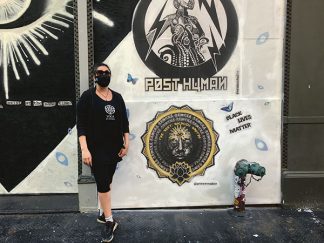By Brian J Pape, AIA, LEED-AP
I collected maps from the Brooklyn Historical Society, and made notes to relate them to Greenwich Village and waterfront changes.
To do justice to the maps and to the readers, we present one map at a time, so that they can be reprinted at a larger size that is more legible. Each map captures a moment in the development of Manhattan. Reader comments are always appreciated.
This map was originally drawn in 1775, by John Montresor, dedicated to Major Gen. Thos. Gage. It includes descriptive notes, “References,” and existing streets, some buildings, farms, docks, and names of property owners and natural landmarks, listed and located.

Of the few streets named here, ‘Broad Way’ ends at the future City Hall Park, ‘Bowry Lane’ begins east of the ‘Fresh Water’ (Collect Pond) and soon becomes the ‘Road to Albany and Boston.’ The waterfront road to Greenwich is not named; and at the end of the “Road to the Obelisk,” I wonder what happened to ‘Gen. Wolf’s obelisk’ in Greenwich?
Relief (steep slopes, hills) are shown by hachures. This map was “Engraved from the original map by John Montrésor for D. T. Valentines manual for 1855 by G. Hayward 120 Water St. N.Y.”
Cecily Dyer, Special Collections Librarian and Manager of Reference and Outreach, said “Our online catalog is part of a consortium hosted by NYU that also includes N-YHS (New-York Historical Society), and the catalog has one record for both our copy of the map and N-YHS’s copy, even though it appears that their copy is an 1855 reproduction while ours is the original from 1775. The inclusion of the note about the N-YHS copy here is a bit confusing, and hopefully we can address the issue soon.” Credit: Maps at Brooklyn Historical Society
Brian J. Pape is a LEED-AP “green” architect consulting in private practice, serves on the Manhattan District 2 Community Board, is co-chair of the American Institute of Architects NY Design for Aging Committee, and is a journalist for architecture subjects.

